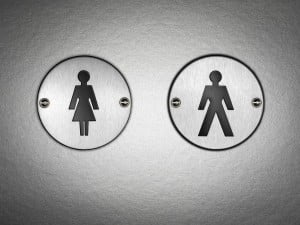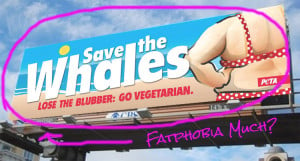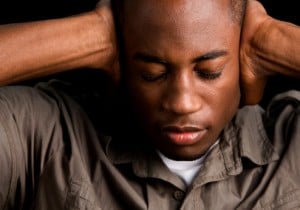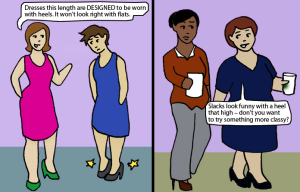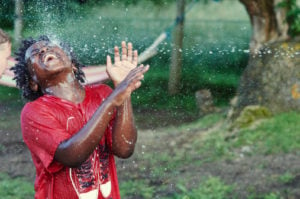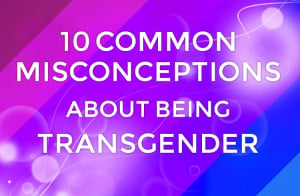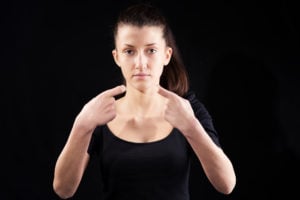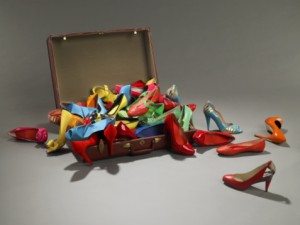
Source: Getty Images
Today in the United States, only 18% of Congress, 24% of state legislatures, and 10% of state governors are female.
Fortunately, this number is increasing as greater numbers of women join the workforce and obtain higher education degrees, but the United States still ranks low on the list of nations with the most women in the national legislature, at number 93. (The study lists the US as number 77, but after accounting for ties with other countries, we lose out to 92 other nations in actual number of women in the national legislature.)
This minority of women in leading political roles faces a tough battle – one that comes with unique challenges like being constantly asked how, as mothers and wives, they balance having a family with their career.
Many male politicians are fathers and husbands as well – but are they asked how they balance those commitments with their lives? Not often, that’s for sure.
But there is something else lurking below the surface that is making things even tougher for women to get – and stay – elected. And it’s hiding behind a friendly grin: that casual comment about the outfit she’s wearing or that mention of her hairstyle.
Simply put: Discuss a female candidate’s appearance in the media, and you steal some of her political credibility.
Research Says: Media Sexism Hurts Female Candidates
Intriguing new research from the Women’s Media Center and Celinda Lake has proven that even mentioning what a female candidate is wearing hurts her political future.
It doesn’t matter if the media is criticizing her attire or saying she looks great; either way, mentioning her appearance makes her drop like a rock in the polls.
And this phenomenon is not caused by (or specific to) conservative media sources.
On the contrary, nonpartisan and left-leaning media commentators and well-meaning supporters who chime in about a politician’s new hairstyle or bright colored shoes are doing just as much to hurt female politicians as anyone else.
Why is Mentioning Appearance So Bad?
The second media coverage moves away from discussing a candidate’s qualifications, policies and strategies and instead starts discussing the dress or pantsuit she is wearing, the less likely voters are to take her seriously.
And that’s because the focus has been moved from her intellect and merit to her appearance.
You don’t vote for someone because they are fashionable. You vote for them based on their politics.
So is there something wrong with liking the outfit your Senatorial candidate is wearing at her press conference?
No, absolutely not.
But concentrating the public dialogue on her ensemble instead of her policies does her a deep injustice and encourages media sexism.
Wendy Davis and the Pink Shoes
Recently, Texan Senator Wendy Davis wowed the world by performing a 13-hour filibuster of an anti-abortion bill that succeeded (for the moment) in halting its passage. The bill closes almost all of the abortion clinics in Texas and prohibits abortion after 20 weeks of pregnancy.
It couldn’t have been easy for Davis to stand on her feet for 13 hours straight without bathroom breaks, wearing a back brace to stay upright, and battling relentless pro-life advocates. But she did it with grace and determination.
The media world applauded Senator Davis for her bravery, strength, and perseverance.
And then they talked about her shoes.
Most articles written about the event included at least some mention (and/or pictures) of the pink running shoes that Davis wore during her filibuster.
While it is clearly uncommon to see a politician speaking on the floor while sporting athletic gear, the overzealous emphasis on Davis’ shoes distracted from her political message and demeaned her efforts.
Most likely, none of the thousands of individuals who wrote witty comments on the Amazon.com review page of Davis’ Mizuno Wave Riders meant to harm her political standing.
In fact, they were trying to stand with her and support the feat that she accomplished.
But describing Davis as “a disrupter in pink running shoes” isn’t the way to do it if they want to see her get elected again.
Is There Anything We Can Talk About?
The media is constantly commenting on and critiquing the actions of politicians. Take the Marco Rubio water bottle incident for example.
No one is arguing that we can’t discuss what our elected officials and political candidates do or say. But it’s the unparalleled focus on women politician’s attire that makes this particular situation a problem, because it doesn’t go both ways.
When was the last time that a male candidate’s newly shorn hair or sparkling cuff links were mentioned by the New York Times?
Gee, I can’t remember.
Men’s attire is not a likely topic of debate in political articles – as it shouldn’t be.
Now the key is making sure that female candidates get the same fashion-backwards treatment.
How to Change the Status Quo
Get in the Know
Organizations like She Should Run, Name It Change It, and Emily’s List work to create powerful social change by encouraging women to run for public leadership positions and speaking out against media sexism.
Join their e-mail listservs to get alerts on sexist media coverage, opportunities to take action, and information about the way to correctly support and encourage female candidates.
Educate Others
This topic simply hasn’t been broached much in American media.
Therefore, people may not even know that they might be affecting their candidate’s chances to win by deliberating on her appearance.
What better way to stop this trend in its tracks than to let people know that it’s a problem and why?
The more people who recognize the damaging effects of making a female politician a “victim of her own fashion,” the less likely people will be to make these types of comments (or so we hope!).
Report What You See
Name It Change It has a special function that lets everyday people report sexist coverage of female candidates in the media by filling out a simple online form.
Hear a news clip about White House counsel Kathryn Ruemmler’s “fabulous” manolos instead of her outstanding legal work? Report it.
Read an article that focuses on Michelle Obama’s bangs instead of her healthy childhood efforts as First Lady? Report it.
Calling out media sexism helps to get the attention of major news sources that don’t want to be thought of as sexist and lose their female audience.
—
It’s a fine line that advocates of feminism and the media will have to walk together.
But if we’re not going to write endless articles mentioning Boehner’s green ties (okay, so there are a few of those), we shouldn’t be consistently discussing Hillary Clinton’s scrunchies either.
It’s a simple change we can all help make, but it could mean a world of difference for the future of women in political leadership.
Want to discuss this further? Login to our online forum and start a post! If you’re not already registered as a forum user, please register first here.
Danica Johnson is a Contributing Writer at Everyday Feminism and the Communications Manager at the Coalition on Human Needs, an alliance of national organizations working together to promote public policies addressing the needs of low-income and other vulnerable populations. Living in Washington, DC, this West Coast native uses her free time to write for her blog Duckyfem, practice yoga and spend as much time with animals and in nature as possible. Follow her on Twitter @duckyfem and Read her articles here.
Search our 3000+ articles!
Read our articles about:
Our online racial justice training
Used by hundreds of universities, non-profits, and businesses.
Click to learn more







